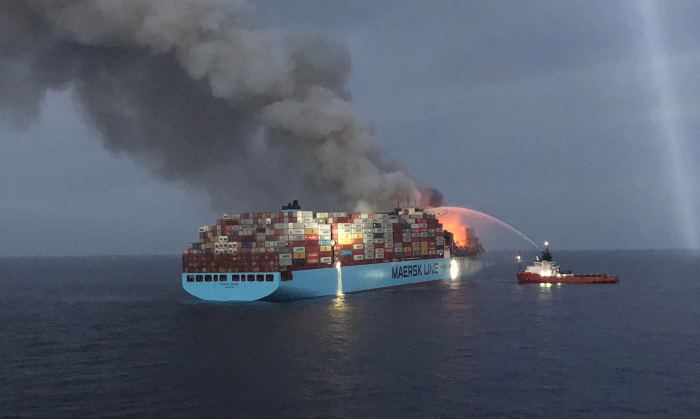Boskalis assists clients throughout the entire lifecycle of their floating production units (FPUs) and floating production, storage and offloading units (FPSOs). The BOKA Vanguard, the largest semi-submersible heavy transport vessel in the world, plays a key role in the company’s FPU/FPSO lifecycle proposition. Jaap Meij, who leads global business development in the Offshore Energy division, and Pim Nelemans, Director Heavy Marine Transport, explain.
The giant BOKA Vanguard (previously the Dockwise Vanguard) broke all records again when it transported the 90,000-ton FPSO P-67 recently, but why was the vessel rebranded with a new name and new colors?
Jaap Meij: “Over the past decade, Boskalis has acquired several leading companies in the offshore energy sector. These companies, which include Dockwise, Fairmount, Stemat and VBMS, have a vast amount of knowledge and expertise. In parallel, we have been developing our contracting solutions and looking to offer clients a more integrated approach in a response to the ever-changing offshore industry. It made sense to bring these companies together to provide a one-stop shop with an unparalleled range of specialist contracting activities and services for the offshore market. So we decided to rebrand these companies under the name Boskalis in April 2018. We wanted to demonstrate our capabilities and wide-ranging portfolio but all under the Boskalis brand.”
“That led to the renaming of the Dockwise Vanguard to the BOKA Vanguard, a significant move that really marked the start of the process. Previously, for example, Dockwise focused primarily on heavy marine transport on a project-by-project basis. But as Boskalis we can do much more. We can deliver all the marine services, towing out, (mooring) installation, subsea-related activities, IRM, decommissioning…”
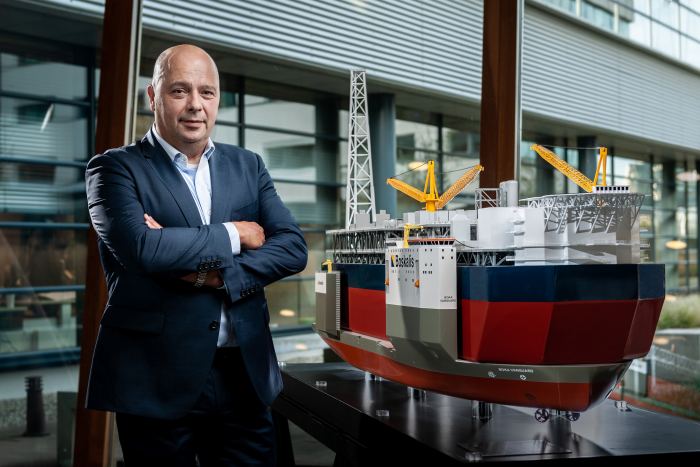
Jaap Meij
“Clients appreciate this move to one brand and it shows we are absolutely committed to the offshore industry. It proves that we are serious about our ambitions and that we are becoming a major player in this industry. Boskalis has a total fleet of 900 vessels and floating equipment of which around 100 are dedicated to the offshore market.”
IT MADE SENSE TO BRING THESE COMPANIES TOGETHER TO PROVIDE A ONE-STOP SHOP WITH AN UNPARALLELED RANGE OF SPECIALIST CONTRACTING ACTIVITIES AND SERVICES FOR THE OFFSHORE MARKET.
Does Boskalis have a proposition for the full lifecycle of FPUs/FPSOs?
Jaap: “Yes, we have an integrated solution for the full lifecycle of an FPSO, from the pre-feed phase right through to the decommissioning and the dismantling of the unit. We can play a role in all stages of an FPSO’s lifetime.”
Could you outline the services Boskalis can provide? Does Boskalis have solutions for both converted FPSOs and box-shaped units?
Jaap: “Indeed, whether an FPSO is a converted tanker and able to sail on its own keel, or a newbuild, we can assist our clients with a broad range of solutions. In the first instance, we offer support during the conversion and construction stages with our range of floating sheerleg cranes, some of which are based in the Singapore area where a lot of FPSO conversions take place. They can be used to lift a topside or process modules onto an FPSO.”
“During the next phase, when the FPSO is completed, Boskalis can execute the wet tow or dry transport, depending on the client’s preference, to take the unit to the field. The majority of the FPSOs are built in China, South Korea and Singapore and they have to be taken to the Atlantic Basin.”
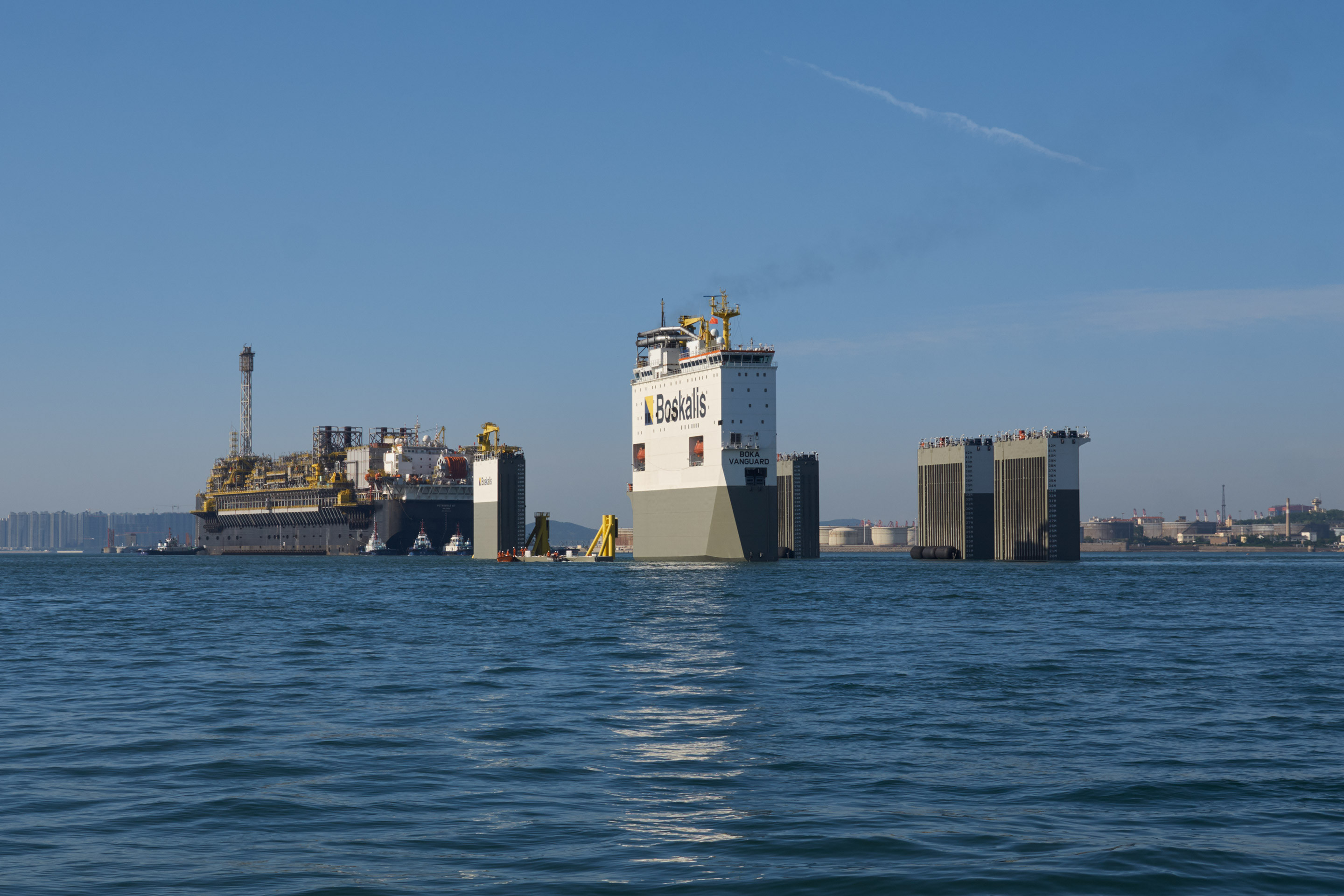
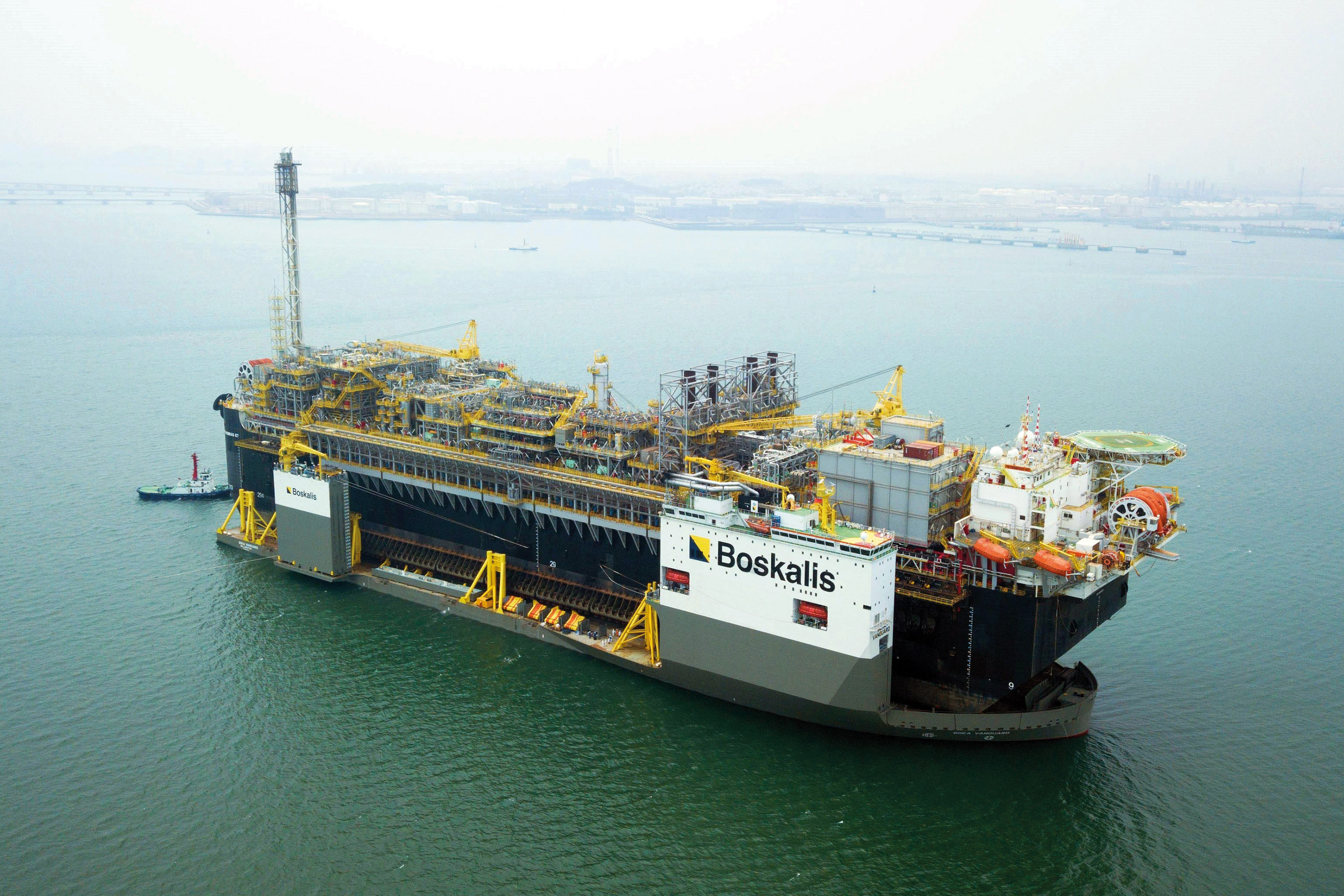
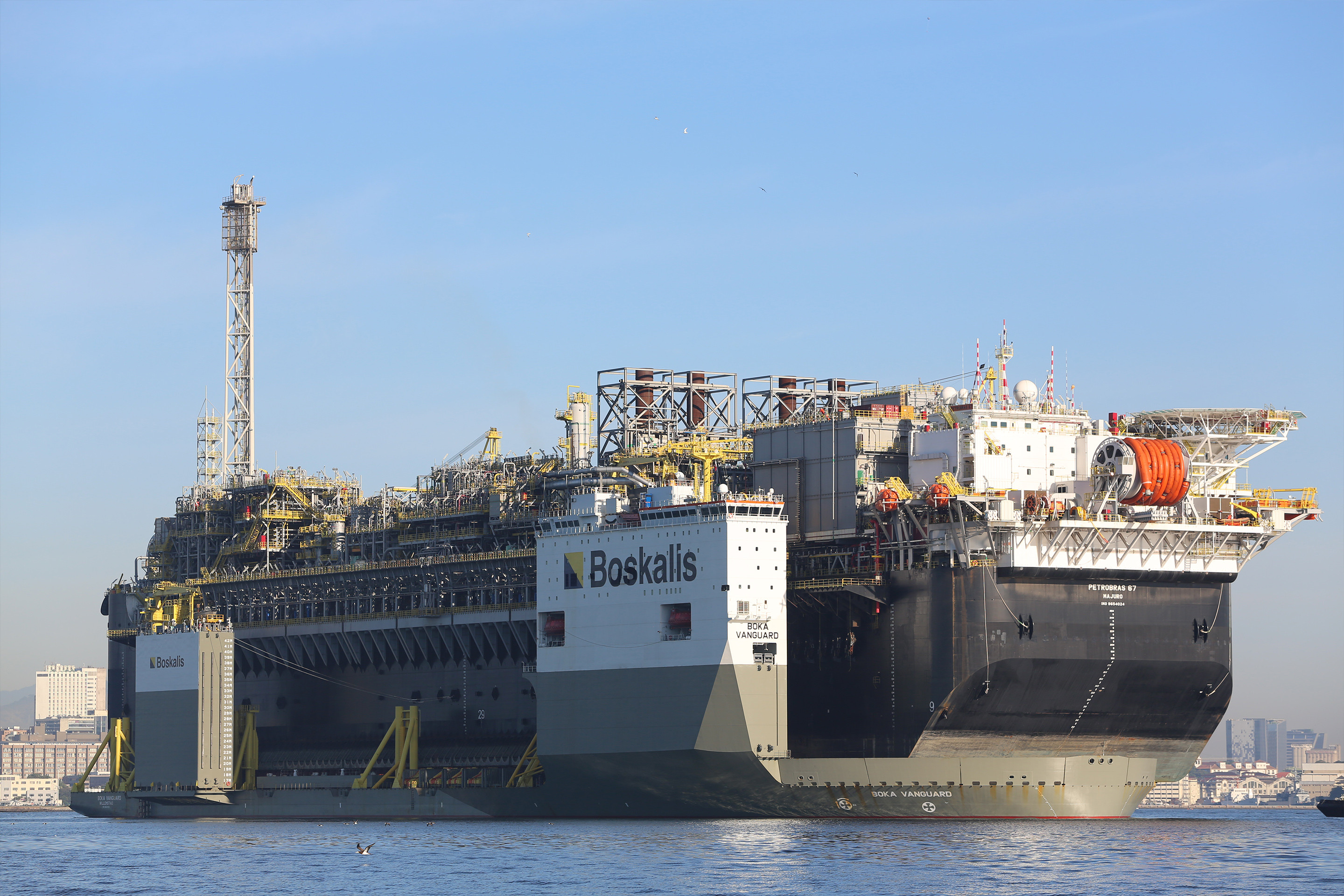
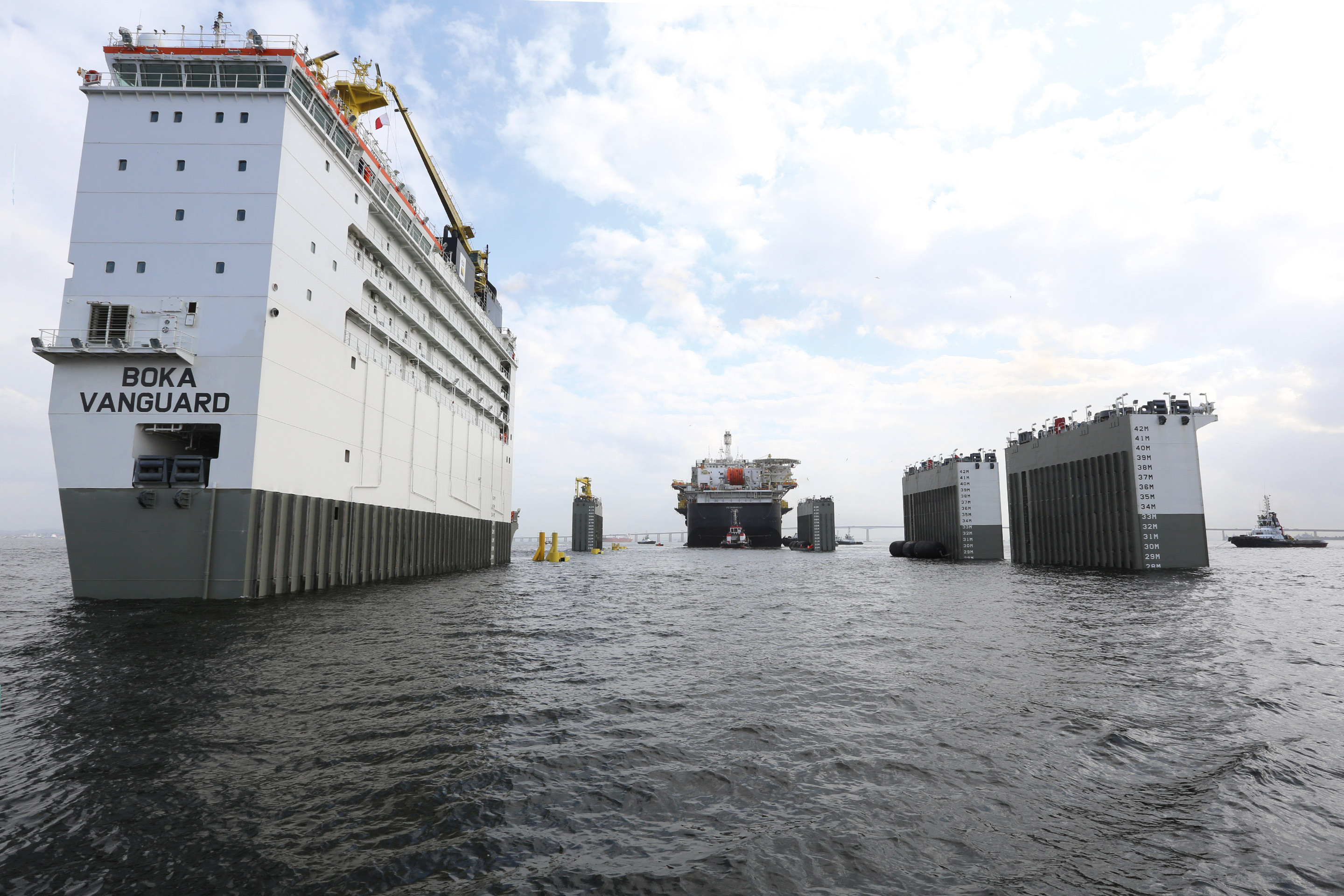
“Before an FPSO arrives at the field, we can install the mooring system at depths of up to approximately 1,000 meters. That system consists of (suction) anchors, chains, wires, etc. that secure the FPSO unit to the seabed. Ocean-going tugs are needed on location to assist with the discharge, and towing to the offshore location once the FPSO has been taken off the BOKA Vanguard. We have construction support vessels that can help to connect the mooring system. The pre-installed subsea umbilicals and steel catenary risers need to be picked up from the seabed and connected to the FPSO. As the FPSO is just a part of the total offshore field development, we also provide other marine services. Generally, large numbers of tugs and barges are required for supplies and logistics during the commissioning and completion of the offshore field, and we offer those marine services, too.”
“At the next stage, when an FPSO starts producing, it needs inspection and maintenance services. Our Subsea Services located in Asia or the Middle East – we can transport it to the nearest port and then bring the BOKA Vanguard in to lift it at the local dry dock. Alternatively, with a turret-moored FPSO, the client may choose to keep the FPSO at its location and we bring the BOKA Vanguard in below the FPSO, connect it, and lift it out of the water. There aren’t many companies that can offer in-situ drydocking of an FPSO in the field! This is particularly helpful for smaller repairs such as corrosion in the water inlets or side shell issues.”
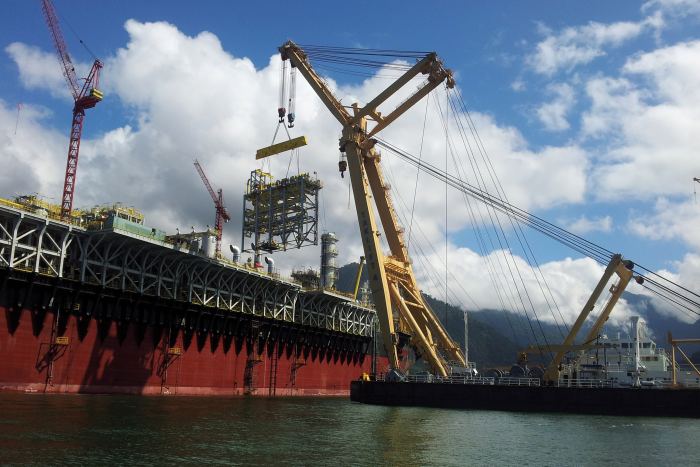
WE HAVE AN INTEGRATED SOLUTION FOR THE FULL LIFECYCLE OF AN FPSO, FROM THE PRE-FEED PHASE RIGHT THROUGH TO THE DECOMMISSIONING AND THE DISMANTLING OF THE UNIT.
The BOKA Vanguard is ideal for the FPSO market and it can assist with repairs and maintenance in a unique way. Can the vessel also execute in-situ drydocking?
Pim Nelemans: “The BOKA Vanguard is a special vessel. Its ‘bowless’ design provides a huge, free deck space of 275 by 70 meters - the entire length of the vessel. The absence of a raised bow and conventional forward superstructure means that cargo overhang, either forward or aft, is possible. And for more extensive maintenance jobs, we can deliver two possible solutions. Rather than sail an FPSO back to a construction yard of the size needed to manage it – those yards are usually located in Asia or the Middle East – we can transport it to the nearest port and then bring the BOKA Vanguard in to lift it at the local dry dock. Alternatively, with a turret-moored FPSO, the client may choose to keep the FPSO at its location and we bring the BOKA Vanguard in below the FPSO and lift it out of the water. There aren’t many companies that can offer in-situ drydocking of an FPSO in the field! This is particularly helpful for smaller repairs such as corrosion in the water inlets or side shell issues.”
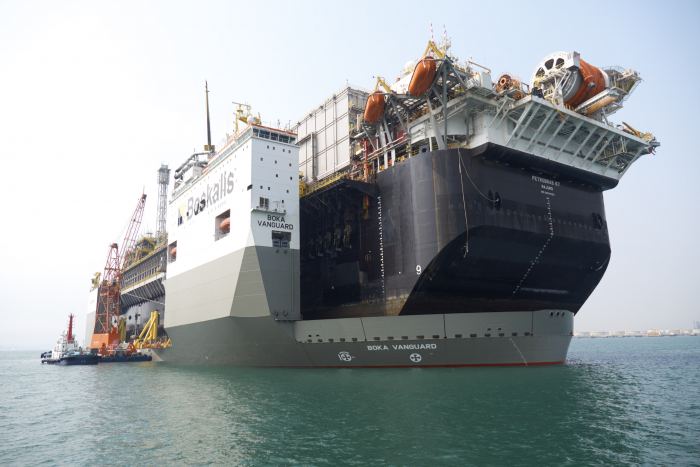
Transport of the P-67 FPSO by the BOKA Vanguard from China to Brazil
Does Boskalis also have the capability to assist with decommissioning, scrapping and recycling at the end of the FPSO’s life?
Pim: “When decommissioning is needed, we can disconnect the steel catenary risers, umbilicals and the mooring system and transport the unit to the scrapyard. Not only can we remove the unit from the field and transport it to the designated scrapyard, we can also manage the whole process of decommissioning, including responsible scrapping and recycling in full compliance with the client requirements and international standards.”
The BOKA Vanguard regularly breaks records, but what was the most impressive one?
Pim: “The amazing transport of the Total Moho FPU, which was the Vanguard’s heaviest cargo ever transported at that time, really stands out. This was the first time a box-shaped, floating production unit had been dry transported around the Cape of Good Hope.”
“The 90,000-ton box-shaped FPSO built by Hyundai Heavy Industries (HHI) had to be transported from Ulsan, Korea to offshore West Africa. As well as transporting this mammoth unit, we also had 225 people onboard during the transit carrying out the final commissioning work. That saved HHI a lot of time because otherwise all that work would have had to take place offshore.”
“The BOKA Vanguard was just one element in the success of the project – albeit a vital one – and we saw once again how Boskalis can deliver an integrated package. When the Total Moho was being towed out to the field, we also transported a semi-submersible drilling rig from Brazil for this project. Our client had asked for tug and barge services as well.”
“These integrated services are hugely important in terms of reducing the risk for the client. All the (offshore) interface risks are managed by just one company that owns and operates all the critical vessels required – Boskalis. For example, we are responsible for bringing in local tugs for station-keeping purposes, multiple ocean-going tugs for the tow to field, CSVs for hook-up and many more vessels. Since we have access to the schedules, we can coordinate everything and keep things on track. We can manage all the vessels and equipment. That means we can reduce the risk of delay and the associated costs.”
BOSKALIS IS NOT JUST A CONTRACTOR; WE ARE A LIFETIME PARTNER!
What about the Aasta Hansteen FPU spar project?
Pim: “The Aasta Hansteen spar FPU was another truly groundbreaking project. It was a classic example of early involvement with the client. We assisted during the concept stage, which eventually led to a float-over operation for the installation of the FPU’s topside rather than a traditional lifting operation. This had never been done before.”
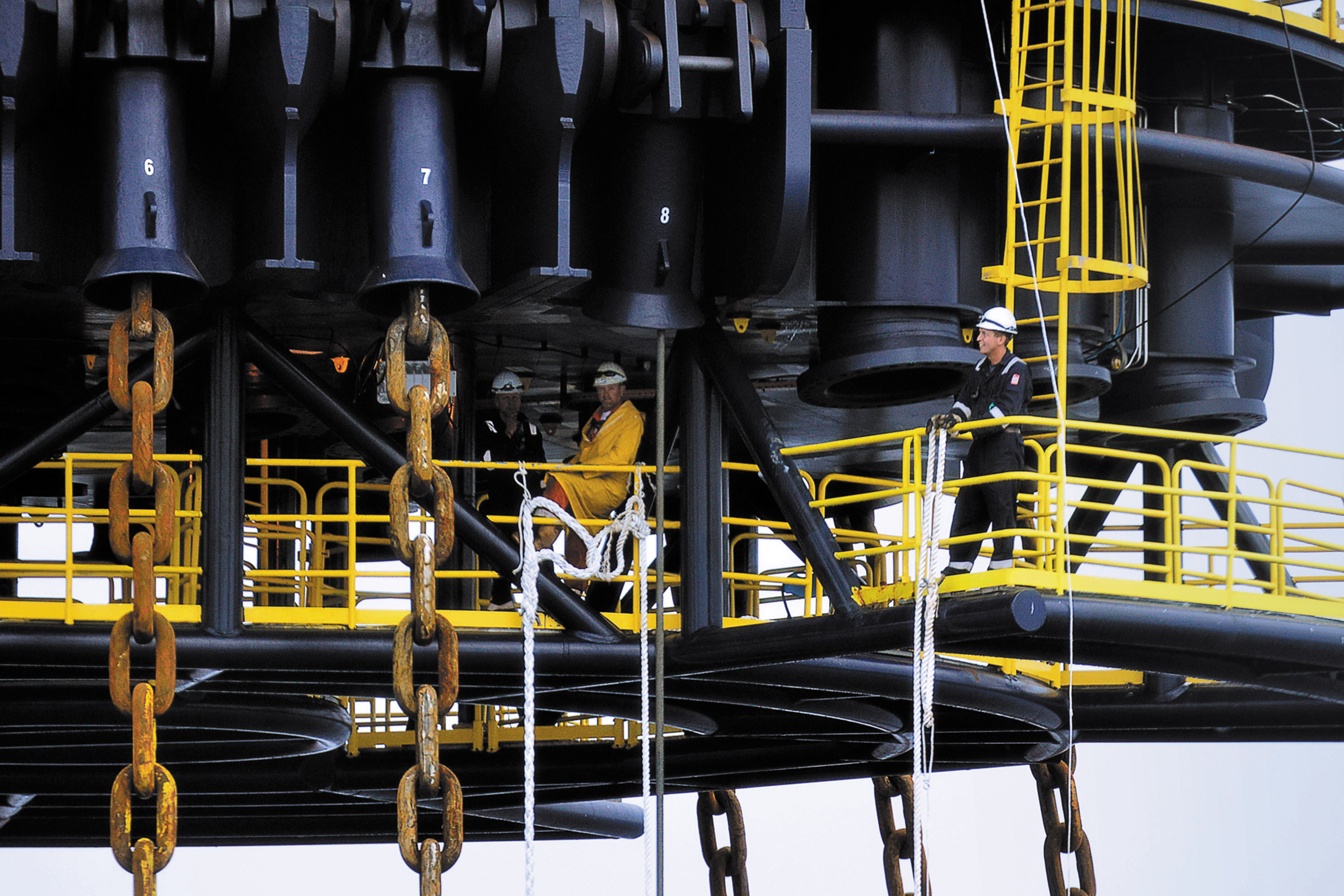

THERE AREN’T MANY COMPANIES THAT CAN OFFER IN-SITU DRYDOCKING OF AN FPSO IN THE FIELD!
Very few companies have the capacity to execute these pioneering projects. How fundamental to success is the relationship with the client?
Pim: “The Aasta Hansteen project was very unconventional. It shows that we are not a ‘traditional offshore contractor’ because we can draw on more than 100 years of maritime expertise. We look for pragmatic solutions to help our clients push back boundaries and create new horizons.”
“We sit next to the client, not opposite them. This is key to our approach. We can help our clients in the early stages of the development of an FPU, including FPSOs, throughout the lifecycle. The importance of a long-term relationship of trust with our clients is critical. Boskalis is not just a contractor; we are a lifetime partner!”
